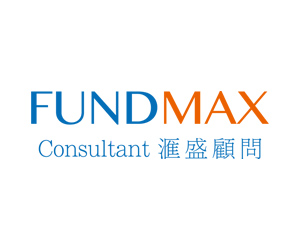Want to be in the loop?
subscribe to
our notification
Business News
GLOBAL VALUE CHAINS DEVELOPMENT IN FOCUS
The level of Vietnam's participation in global value chains (GVCs) is still limited, despite being one of the most open economies in the world. In 2018, Vietnam only generated US$20.4 billion through participating in GVCs, ranking 55th out of 174 countries, while the Philippines generated US$84.8 billion and ranked 34th.
Ms. Victoria Kwakwa, Vice President for East Asia and Pacific of the World Bank, affirmed this at the annual Vietnam Development and Reform Forum, which was recently held in Hanoi.
With outstanding development results in the past three decades, Vietnam is considered a development success story. Vietnam continues to do well in the context of a pandemic across many sectors, including trade, growth and human capital development.
However, according to Ms. Victoria Kwakwa, Vietnam still has considerable room to continue to improve the development of GVCs to realize Vietnam's ambitious long-term development goal of becoming a high income country by 2045 and narrowing the development gap with advanced economies.
According to statistics, the level of Vietnam’s participation in sophisticated processes remains low. According to the World Development Report (WDR) 2020, Vietnam's participation in manufacturing is limited and needs to move up in GVCs to increase productivity. The next two levels in GVC participation are advanced manufacturing and services and innovation activities.
Several other countries in ASEAN, such as Malaysia, Thailand and the Philippines, are now in advanced levels of manufacturing and services. The 2020 WDR estimates that 1% increase in GVC participation will increase per capita income by more than 1% - twice as much as traditional trade. Thus increasing Vietnam’s participation in GVC will be very important for Vietnam to accelerate productivity and growth.
To prepare well for a strong recovery and take advantage of emerging opportunities, Ms. Victoria Kwakwa said that, in the short term, diversification of multinational companies (MNCs) depends on restoration of alternative production facilities. Vietnam has done well so far, but needs to continue to stop the virus and consolidate activities that could accelerate a dramatic recovery. Vietnam needs to resist the temptation to become more protective. It should continue to ease restrictions on FDI inflows and FDI business.
In the medium term, it is important to be well prepared for the “new normal” of the GVCs. Supply chains cannot be set up overnight, and companies still have to go through time-consuming and costly relocation processes. To do this, Vietnam could consider a range of measures, for example considering developing strategies to proactively target and attract investors from China, improve FDI leverage and take measures to strengthen closer links between FDI and domestic firms. These two types of measures can lead to the establishment of quality certification systems that are often required when entering foreign companies' supply chains, and improved digital infrastructure that allows firms to operate from a distance both along the global value chain and reaching overseas markets.
It is also important for the Government to also re-examine its science, technology and innovation strategy. Ongoing support for innovation based on applied R&D are implemented by university and research institutions and FDI firms. At this stage, however, much of the productivity gains in Vietnam are likely due to improved management, production and application of existing technologies. Therefore, the rebalancing of resources and policy tools to support many Vietnamese enterprises to help them "reach the current yield limit" through the application and dissemination of available technology should be a key priority pillar in Vietnam's Science, Technology and Innovation Strategy.
In the long term, Vietnam needs to close the productivity gap and move toward productivity limits. Labor productivity in emerging markets and developing economies (EMDE), on average, is less than a fifth of that in advanced economies, and international experience shows that only the economies with characteristics such as high institutional quality or high levels of education can possibly reach this limit.
In particular, according to Ms. Victoria Kwakwa, Vietnam should focus on developing skills and building R&D capacity, as well as effectively implementing Vietnam's breakthrough in institutional reform. Skills development is important to increasing the level of participation in GVC, from the limited level of processing and manufacturing, as in Vietnam today, to the level of advanced manufacturing and services. At the same time, Vietnam may also need to pay due attention to R&D capacity and protection of intellectual property rights (IPR) to prepare for a gradual transition to the final level of participation in GVC: innovation activities.
To continue to ensure inclusive development, Vietnam needs to well manage labor market disruptions, a consequence of technological development, associated with emerging automation and digitalization trends. For example, new technologies can lead to more unsafe and precarious work placements, so legal and tax reforms or traditional social security reforms will be needed to strengthen rights of workers. Rapid change in technology can also contribute to wage inequality between workers, as well as between employees and business owners, and progressive tax policies can be used to ensure that benefits gained from new technologies, such as AI, are shared more broadly.
Source: VCCI
Related News

VIETNAM’S GDP TO GROW 5.5% THIS YEAR – WB
This forecast is based on the assumption of a moderate recovery in manufacturing exports in 2024, fueled by rebound growth of 8.5% year-on-year in the fourth quarter of 2023 and 17.2% year-on-year in the first quarter of 2024, reflecting strengthening global demand, said Dorsati Madani, senior country economist at the WB in Vietnam.

FARE REFUND FOR VISA REJECTION
Cathay Pacific will offer full refunds for cases of visa rejection to provide you with the confidence to explore the world with ease. If you are planning to fly to a destination that requires an entry visa, you can now book with greater peace of mind.

FOUR COMMODITIES POST Q1 EXPORT VALUE OF OVER 5 BILLION USD
The total export turnover of agricultural, forestry, and fisheries products in the first three months of 2024 is estimated to reach 13.53 billion USD, an increase of 21.8% compared to the same period of 2023.

MOIT PROPOSES SCHEME TO BOOST RENEWABLE ENERGY PROCUREMENT
The proposed Direct Power Purchase Agreement (DDPA) mechanism, outlined in the draft decree, targets organisations and individuals consuming electricity from the 22kV power grid or higher, with a monthly consumption averaging 500,000kWh. However, residential households are excluded from direct procurement.

REAL ESTATE BONDS PLACE PRESSURE ON ISSUING FIRMS
The ministry’s recent report underscores concerns within Vietnam’s corporate bond market for 2023 and 2024. It emphasizes the critical need to address hindrances to the real estate sector in line with the objectives provided in Government Resolution No. 33/NQ-CP, which aims to stabilize the industry.

DA NANG CUSTOMS FOCUSES ON DEVELOPING CUSTOMS-BUSINESS PARTNERSHIPS
Da Nang Customs Department issued an action plan for developing customs-business partnership in 2024. One of the new events this year is the workshop on “Settlement reports for enterprises engaged in outsourcing, export production and export processing” held in Da Nang Customs Department on April 16, 2024.

































